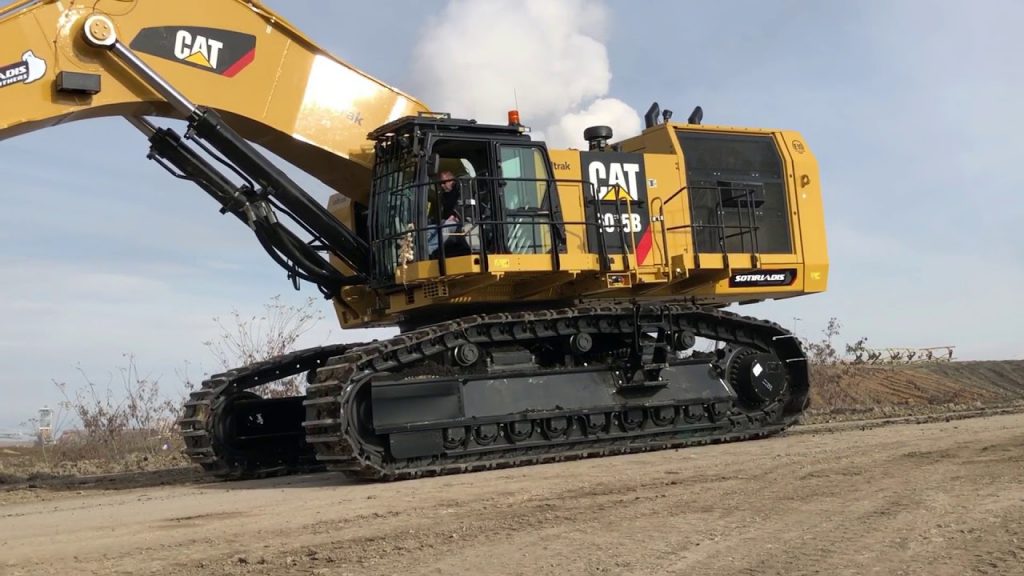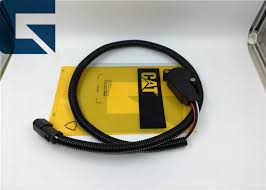One of the most common problems with CAT excavators is the throttle. Often it is connected to the idler arm. Here following you will learn how to fix a broken throttle cable yourself and save money!
The cat excavator throttle cable needs to be replaced
Throttle Control Cables are used in various applications such as an engine throttle control. Throttle cables are used in almost every engine that has a carburetor, or on newer engines with electronic fuel injection (EFI) to connect the accelerator pedal to either the throttle body or EFI control module. A throttle cable is usually made up of a metal wire core surrounded by a plastic inner housing and then a nylon outer housing. The cable operates by running through a series of pulleys and levers which eventually opens the throttle valve. The throttle cable can fail due to wear and tear. If your vehicle is experiencing any of these symptoms, it may be time for you to replace your throttle cable:
- Engine is slow to respond when you press on the gas pedal
- Engine revs up too fast
- Check Engine light is on

The cat excavator throttle position sensor needs to be replaced
Check the throttle position sensor. If it’s not on the injection pump, you might have to disconnect the linkage to check it. Compare the reading to specs in your service manual.
If the readings are off, you may need a new throttle position sensor, or it may simply be out of adjustment.
Check other sensors if the throttle position sensor checks out OK, and compare them to specs in your service manual. With a multimeter, you can measure things like coolant temperature and ambient air temperature sensors, as well as vehicle speed and air pressure/flow sensors.
Inspect electrical connections on all sensors before replacing them. If they’re corroded or loose, that could be causing bad readings. Clean them with a wire brush or replace them before replacing sensors.
The throttle position sensor, commonly abbreviated as TPS, is located on the throttle body of your engine. The purpose of this sensor is to help the car’s computer determine how much air the engine needs to run efficiently. When this sensor goes bad you are bound to have problems with your car running properly. A bad throttle position sensor can cause problems with your car’s engine and fuel management system.
- Symptoms of a Bad Throttle Position Sensor
- Engine runs rough at low speeds or when idling
- Decrease in power and acceleration
- Poor fuel economy
- Buck/jerk when accelerating
- Hesitation when accelerating
- Stalling when coming to a stop or at idle
computer needs to be reset on the cat excavator
The cat excavator computer needs to be reset on the cat excavator. The cat excavator computer needs to be reset on the cat excavator. The cat excavator computer needs to be reset on the cat excavator. The cat excavator computer needs to be reset on the cat excavator. The cat excavator computer needs to be reset on the cat excavator.
The cat excavator computer needs to be reset on the cat excavator. The cat excavator computer needs to be reset on the cat excavator. The cat excavator computer needs to be reset on the cat excavator. The cat excavator computer needs to be reset on the cat excavator. The cat excavator computer needs to be reset on the cat excavator.
The cat excavator computer needs to be reset on the cat excavator. The cat excavator computer needs to be reset on the cat excavator. The cat excavator computer needs to be reset on the cat excava.
There is trouble with the engine on the cat excavator
There is trouble with the engine on the cat excavator. It’s running rough, and there’s a lot of white smoke coming out of the exhaust. The mechanic, who has been working on it for some time now, is sitting on top of the engine with his head stuck down inside it, looking for the problem.
The foreman walks by and asks him what he’s doing. The mechanic replies without turning around, “There’s trouble with the engine. I’m checking it out.”
The foreman continues walking and sees another mechanic down in the pit underneath the excavator. He asks him what he’s doing and he replies, “There’s trouble with the tracks; they’ve come off.”
An electric problem causing cat excavator throttle problem could be traced to the plug
An electric problem causing cat excavator throttle problem could be traced to the plug
Before you start, you need to check the battery voltage, it should be minimum 12.5 volts, more than 12.5 volts is fine but less than 12.5 volts is not acceptable, if it is less than that then you have a starter or charging system failure.
Now to check the parking brake, when your parking brake is engaged, it should apply all 4 wheel brakes fully at once. This can be done by squeezing your foot brakes and putting your parking brake on at the same time as you are squeezing your foot brakes. If all 4 wheels lock up together then your parking brake is good. If not then you have a problem in the parking brake system that needs to be fixed before continuing with this test.
The next step is to remove the negative cable from the starter motor battery terminal and connect it to the positive terminal of a voltmeter set for DC Volts. Then you connect your voltmeter black lead to the positive terminal of battery which is now connected to the starter motor positive terminal through the cable connection and ground this negative lead of voltmeter on frame of vehicle near starter so that we can take a reading from this volt meter when we turn ignition key on or crank.

This blog helps you through step by step procedures to fix and adjust your cat excavator throttle
Turn the excavator on and set the parking brake. The parking brake is located next to the seat and should be pulled up before operating the excavator.
Look at the control console of the excavator. There should be two levers that operate the tracks and one lever that operates the boom, which is what moves dirt. If there are any other levers, they will be for auxiliary functions such as an air conditioner or radio.
Locate the throttle control. It is usually a trigger located on one of the track levers. The exact location of this trigger varies from model to model, but it can be found without too much difficulty.
Press down on the throttle trigger with your index finger and pull back gently until you feel resistance. This may require varying amounts of pressure depending on what type of throttle control it is and how used it is.
Release your finger from the trigger and move your hand away from it quickly so that it does not accidentally get pressed again during operation.
